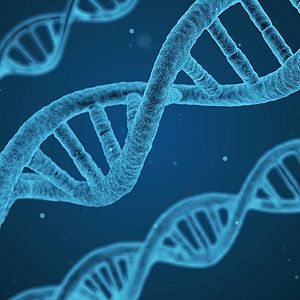Genetic Risk Factors for a Heart Attack
Familial predisposition is one of the most important risk factors for cardiovascular disease. This is also known as genetic predisposition, and is a hereditary condition or susceptibility for a certain disease.
The First Sign of a Genetic Predisposition

Genetic Predisposition
Approximately 40% of the risk for cardiovascular disease lies in hereditary factors.1 DNA, located within genes, is hereby crucial. Molecular biology or cytogenetic tests can determine ones’ predisposition from genetic material. High blood pressure and arteriosclerosis are two examples of cardiovascular diseases which may be genetically triggered.
Current Research
Researchers have been working hard for years to identify genes that are responsible for causing an increased heart attack risk. If a genetic predisposition is known, physicians can adjust their diagnostics and therapeutics accordingly. In the future, genetic testing for cardiovascular diseases could become standard.
In the „Genome-wide Association Studies (GWA)“ from University of Lübeck’s Medical Clinic II led by Prof. Dr. rer. nat. Erdmann, Dr. med. Linsel-Nitschke and Prof. Dr. med. Schunkert3, gene segments were identified that undoubtedly affect the risk of arteriosclerosis. Researchers could identify eleven chromosome segments that contribute to a reproducible risk of heart attack.
Additionally, many genes have been identified that impact lipid metabolism, high blood pressure, risk of diabetes mellitus or propensity for obesity. Not only are the genetic causes of heart attack becoming more transparent, but individuals’ life-long cardiovascular risk can also be better estimated.
At the University of Duisburg-Essen, studies showed that a so-called high blood pressure gene in men doubles the chances of having a heart attack. This is independent of other risk factors such as age, gender, diabetes or obesity.
The First Sign of a Genetic Predisposition
Family history can be the first indicator of a genetic predisposition. Those in question should collect information about their blood relatives, both living and deceased, with regard to heart attack, stroke, angina pectoris and coronary artery disease (CAD). It has proven useful to document this information as a family tree differentiated by gender and generation. If multiple events occur in family members, a familial predisposition for heart attack may be present. In this case, the risk of a coronary event is increased; however, this does not prove this to be the cause. A negative family history reduces the likelihood of the presence of a genetic predisposition but does not rule it out.
What You Can Do
Individuals with a genetic predisposition for heart attack or cardiovascular disease are not necessarily helpless. The case control study „Interheart“2 performed by Cathryn Lewis from Kings College in London had 27,000 participants and showed: the risk of suffering from a heart attack is similarly low in individuals with certain “risk genes” compared to those without a “risk gene” when adhering strictly to nutrition recommendations for individuals with cardiovascular disease. However, the risk doubled for individuals with “risk genes” and unhealthy eating habits. This means: for the group with a genetic predisposition, it is especially important to lead a healthy lifestyle in order to compensate for the increased likelihood of heart attack.
Regular heart checks offer the possibility to diagnose coronary changes at an early stage. Learn here how CardioSecur can help in the setting of a genetic predisposition.
In our latest blog article, we talk about how you can lead a healthy lifestyle in order to reduce the severity of potential outcomes. Read the blog article here.
Definitions:
Genome-wide Association Studies (GWA): Is a method of investigating the relative relationships between genetic variants and personality traits tendencies towards specific diseases. For this purpose, very large samples are needed; therefore, several research groups perform these studies.
Genome: the entire genetic material of an organism
Cytogenetic Testing: with the help of cytochemical and enzymatic staining techniques, characteristic band patterns are generated on metaphase chromosomes. This allows for the clear identification of the 22 pairs of autosomes (a copy of the chromosomes from the mother and from the father), as well as the XX or XY sex chromosomes.